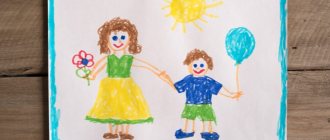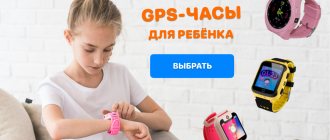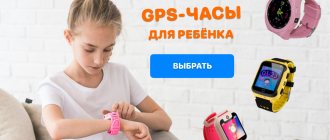An aggressive child is not a rare phenomenon in the modern world.
Unfortunately, for many parents this is a big problem that they face at home when raising their child, as well as in the children's group, when their beloved baby is in the same territory with a child who is showing aggression.
“What is the danger of aggression?”, “How to help a child with aggressive behavior?” – we will try to answer these and other questions in this article.
What is childhood auto-aggression?
Childhood auto-aggression is a form of behavior that is aimed at causing harm to oneself. Self-blame, self-humiliation, self-abuse, infliction of physical pain and injury, restriction of food and water consumption, suicide attempts, passion for extreme sports - all these are manifestations of auto-aggression. Small children may bang their heads against walls, bite and scratch themselves, while teenagers refuse to eat or communicate and risk their lives. In most cases, such symptoms require specialist intervention.
Aggression and autism
Contemporary research on aggression in individuals with ASD reveals interesting trends regarding risk factors. The findings advance our general understanding of problem behavior. Let's look at the most interesting of them:
- People with ASD are more likely to display aggression towards their caregivers compared to neurotypical samples and other individuals with cognitive impairment.
- Autistic people of both sexes show approximately the same tendency towards aggression, which distinguishes them from the rest of the population. At the same time, conventional risk factors (lower levels of intellectual development, education, speech skills) do not increase the likelihood of aggressive behavior among individuals with ASD.
- As with the neurotypical sample, age is a risk factor. The younger the person with ASD, the higher the level of aggression. Presumably, maturation and learning have beneficial effects on behavior.
- Those who have more severe symptoms are most prone to aggression. At risk are children who engage in intense repetitive behavior, especially self-harm and rituals, as well as increased sensitivity to disruptions to routine. More global difficulties in social interaction are also associated with aggressive manifestations in autism.
The above suggests that the core symptoms of autism correlate with the risk of developing problem behaviors. Perhaps the lack of understanding of others and the discomfort caused by disruption of the usual state of affairs contribute to the development of aggressive types of reactions in people with ASD.
Causes of auto-aggressive actions
Most often, self-destructive behavior is formed in a child who grows up in a dysfunctional family. In adolescence, conflicts with peers, teachers, and parents become key factors.
The causes of the disorder may be:
- Features of the psyche
. First of all, emotional children and adolescents who have low self-esteem, are characterized by isolation, unsociability, and changes in mood suffer from auto-aggression. Such children are ready to share the problems and worries of loved ones. - Constant presence in parental conflicts
. If mom and dad quarrel, fight, or swear, the child may experience a feeling of panic, as well as an urgent need to stand up for the offended loved one. Helplessness and the inability to express emotions can lead to self-aggression. - Physical and verbal punishment.
The use of violence, quarrels, and conversations in a raised voice can cause the child to take out the accumulated negativity and resentment on himself and his own body due to the fact that he cannot respond to a strong adult. - Insufficient attention from adults
can provoke a child’s desire to harm himself and thus manipulate his parents. - With high demands,
the child, in case of failure and failure to meet the expectations of the parents, feels guilty, is very worried and punishes himself for mistakes and bad grades. - If parents suffer from auto-aggression
, the child is likely to copy the behavior of his relatives: refuse food, lock himself in his room, preferring loneliness to family communication, and call himself names.
Relaxation games for preschoolers
To effectively relieve psycho-emotional stress in young children, relaxing games are suitable. Their goal is to relieve high psycho-emotional arousal and create a positive emotional background.
"Ant". A child and an adult are sitting on the carpet.
Adult: “We are sitting in a clearing, the sun is gently warming us. We breathe calmly - inhale, exhale. Suddenly an ant climbed onto my toes. Pull your toes toward you with force. The legs are straight and tense. Listen to which finger the ant is sitting on, hold your breath. Let's throw the ant off its legs and exhale. Toes down, feet to the sides, legs relaxed, resting.” (Repeat several times.)
"Ice cream". An adult offers a game, explaining the rules: “You are ice cream. You just got taken out of the refrigerator. The ice cream is hard as a rock. Your arms are tense, your body is icy. But then the sun warmed up, the ice cream began to melt. Your body, arms, legs have become soft and relaxed. The arms hung limply along the body..."
"Smile". An adult shows a pre-prepared picture with a smiling sun.
Adult: “Look how beautiful the sun is, it smiles widely for you. Smile back at the sun. Feel how the smile goes into your arms and reaches your palms. Smile again and try to smile wider. Your arms and hands are filled with the smiling power of the sun.”
"Catch a butterfly." An adult shows a flying butterfly, tries to catch it - performs grasping movements above the head with one hand, then the other, with both hands at the same time. The child repeats the movements of the adult. Then together they slowly unclench their fists and see whether they have caught the butterfly or not. Then they put their open palms together, imagining that they are holding it.
"Cold - hot." Adult: “Imagine that you are playing in a sunny meadow. Suddenly a cold wind blew. It became cold, and you froze, wrapped your arms around yourself, pressed your head to your arms - you warmed up. You've warmed up, now relax. But then the cold wind blew again...” (Repeat the action several times).
How do psychologists classify auto-aggression?
In psychotherapy, there are two types of auto-aggressive behavior:
- physical aggression
(more common in boys, accompanied by self-harm and physical harm);
- verbal aggression
(psychological punishment that manifests itself verbally - the child comes up with offensive nicknames for himself, scolds and blames himself).
In terms of content, auto-aggression can be expressed:
- self-harm (self-inflicted bruises and cuts, passion for tattoos);
- chemical dependence (smoking, drug use, alcohol or toxic substances);
- eating disorders (typical of adolescents, manifested by refusal to eat, strange rituals during meals, consumption of harmful foods that cause pain or heaviness in the stomach, uncontrolled gluttony);
- fanaticism (to the detriment of himself, the child accepts the rules of a group, for example, a religious or sports fan society);
- autism (the child withdraws into himself, stops communicating with peers, excludes interesting pastimes);
- victim behavior (late walks or provocative behavior - in a word, actions and actions in which a person risks harming his health or life);
- suicidal behavior (the latter form of auto-aggression, can be overt or disguised as extreme sports, for example).
Signs of auto-aggression that occur most often at specific age stages
This issue is certainly worthy of separate discussion. Often, it is with close people that an egoist is the most demanding, inattentive, careless, allows himself to raise his voice, and believes that the closer a person is, the more he owes him.
It is necessary to realize that family/close relationships, first of all, involve your responsibility; they should bring joy to all participants, and not be used to satisfy the needs and desires of only one person. If you do nothing, you can ruin your relationships (or even lose them) with the people you care about most.
How to proceed?
- It is very important to recognize the problem and give yourself and loved ones the same rights.
- Monitor your behavior, record and eliminate those moments in which you demand more from your partner than from yourself.
If you feel that it is difficult for you to cope with the current situation on your own, seek advice from a psychologist.
Examination of children with auto-aggression at the Leto mental health center
Psychotherapists use a variety of tests to diagnose behavioral disorders. Doctors evaluate:
- speech development, the ability to maintain a conversation on a given topic, name and list the properties of objects;
- spatial perception, the ability to correlate tactile sensations with words (for example, they give geometric shapes or toys to touch in a bag, the little patient must name them);
- the ability to concentrate and maintain attention on something;
- learning ability, memorization and analysis of information;
- ability for figurative, spatial, logical thinking.
To identify mental disorders, doctors at the Leto clinic use special questionnaires, questionnaires and tests . If any mental or physical illness is suspected, a comprehensive diagnosis is indicated. Recommend:
- clinical blood and urine tests;
- ultrasound examination of internal organs;
- EEG;
- Dopplerography of cerebral vessels;
- radiography, CT or MRI (according to strict indications, since to ensure immobility, tomography is done under general anesthesia);
- if necessary, biomarkers for inherited mental illnesses and neuroinfections.
is of great importance . The doctor asks about:
- during pregnancy: infections suffered by the mother, fetal hypoxia, placental insufficiency, etc.;
- complications during childbirth, perinatal and neonatal periods;
- diseases suffered by the child (especially if the pathological process affected the central nervous system), traumatic brain injuries;
- the general situation in the family (although adults do not always answer such questions frankly);
- severe nervous shocks that could affect the emotional state of the baby (loud quarrel between parents, assault, fear, etc.).
Literature that will help
- Early and preschool age
. The baby scratches and pinches his arms and legs, hits his head and shoulders, and pulls out his hair.
- Senior preschool age.
The child considers himself the cause of conflicts and quarrels in the family, punishes himself for this mentally, and physically only when no one sees him.
- Junior school age
. By inflicting physical harm on himself, the child manipulates adults in order to evoke pity and sympathy from them.
- Middle school age and adolescence
. Self-destructive behavior has the goal of gaining recognition or attracting the attention of peers, parents, and teachers. This may include, for example, refusing to eat, cutting, or riding motorcycles at top speed. Suicide is seen not only as a method of punishment, but also as a solution to all problems.
How to understand that your child is behaving aggressively: symptoms and signs, diagnosis
What parents should pay attention to in their child’s behavior:
- the child cannot control his words, actions, emotions, and behavior in general. In rare cases, he may try to take control of his behavior, but nothing comes of it;
- the child often quarrels with peers and adults, deliberately enters into arguments with them and sorts things out;
- breaks toys, destroys buildings made by others; loves to spoil other people's things and at the same time takes obvious pleasure;
- does not respond to requests, instructions and violates established rules;
- deliberately does “bad” things to cause a negative reaction;
- remembers the insult and the offender, often wants to take revenge on the offender;
- cannot admit his mistakes, always tries to justify himself or blame someone else.
Children, especially preschool age, are characterized by disobedience. If there is a serious reason for this (unfair punishment, resentment), then the child’s anger and aggression are completely justified, and in such cases it is considered an absolutely normal reaction of the child.
Parents should take action only if they notice at least several of the above signs in their child regularly (from six months).
Diagnostics
If there is any doubt about the child's level of aggression, parents should pay special attention to his drawings, because they can be very informative. It may be time to seek help if your child:
- depicts himself as a small figure (relative to other objects in the picture);
- draws himself in a “closed” pose (an elongated, angular figure with his hands pressed to his body or hidden behind his back);
- draws himself with large eyes, with clearly drawn pupils;
- clearly draws teeth and nails;
- draws weapons;
- fire;
- huge hands, fists;
- regularly “forgets” to draw one of the family members or leaves this figure unpainted;
and:
- if there are many corrections in the drawing;
- the lines of the drawing are weak or there are no clear contours.
Diagnosis of a child’s aggressive behavior should be carried out by specialists (psychologist, psychotherapist, neurologist). The main goal of such a diagnosis is to find out the cause of aggressive behavior, to understand why, why and what he is protecting himself from. It is also necessary to clarify what “resources” this child has, so that they can be “relyed on” in solving this problem.
Complications of auto-aggressive behavior
Through auto-aggression, the child gets used to reacting to difficult life situations, while other ways of resolving conflicts are not formed.
With age, such a person:
- unable to have a constructive conversation;
- cannot express and defend his opinion;
- tries to avoid negative reactions and evaluations from others, therefore limits his behavior;
- has an autistic character;
- anxious and suspicious;
- has difficulty adapting to an unfamiliar society or a new team.
Sometimes, due to the inability to socialize, such people leave work and cannot start a family or make friends.
PATHOGENESIS
Auto-aggression in children is formed as a result of intrapersonal conflict due to a low level of social adaptation. It involves redirecting destructive activity from external objects to oneself. The external object most often are people on whom the child’s well-being indirectly or directly depends. In the personality structure, two differently directed motives collide: to harm the offender and throw out all the negativity and maintain a good attitude in order to continue to receive significant resources, for example, love and care.
Due to the characteristics of the psyche, some children resolve the existing intrapersonal conflict by splashing out negative feelings on themselves, while the relationship with a significant person remains friendly. The baby does not have to worry about disruption of relationships and loss of position in the family and society. Auto-aggression is a pathological way of maintaining psychological and physiological harmony in conditions of impaired adaptation to society.









